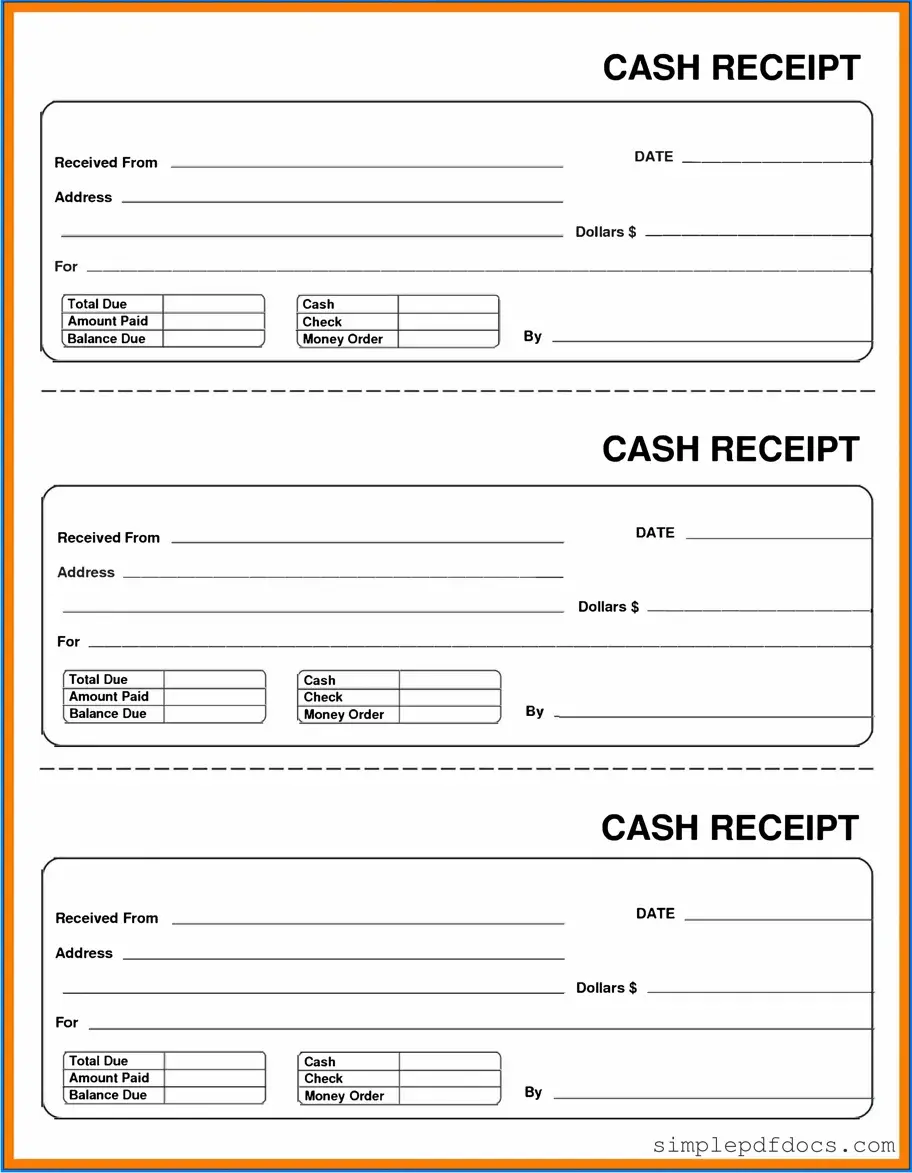Fill Your Cash Receipt Form
The Cash Receipt form is a document used to record cash transactions, providing a detailed account of payments received by a business. This form serves as a crucial tool for maintaining accurate financial records and ensuring transparency in monetary exchanges. By documenting each cash receipt, businesses can track income effectively and uphold accountability.
Get Document Here
